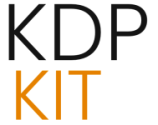The Author’s Essential Guide to Email List Building in 2025

In the dynamic landscape of author marketing for 2025, building and nurturing an email list remains a cornerstone of success. While social media platforms offer visibility, an email list provides a direct, controlled, and deeply personal channel to connect with readers. This guide explores the critical importance of email list building for authors, the most effective strategies for growth, and the tools that can help you cultivate a loyal readership.
Why Email Lists Are Crucial for Authors in 2025
In an era of ever-shifting social media algorithms, an email list offers authors a stable and reliable marketing channel. Unlike social media, where reach can be unpredictable, email marketing provides a direct line to your audience’s inbox, ensuring your message is seen by those who have explicitly opted in to hear from you. This direct communication fosters a sense of intimacy and allows for deeper engagement than fleeting social media posts. As Jane Friedman aptly states, “Email marketing is the No. 1 overlooked means of reader engagement for authors and publishers.”
Furthermore, an email list empowers authors to build direct relationships with their readers, fostering loyalty and encouraging repeat purchases. Publishers also recognize the significance of an author’s platform, with email list performance often being a key metric. By consistently providing value and engaging content, authors can transform subscribers into dedicated fans who eagerly anticipate new releases and support their writing journey.
Key Strategies for Building Your Author Email List
Building an effective email list requires a strategic approach, focusing on providing value and making the sign-up process seamless. Here are the key strategies for authors in 2025:
1. Create an Irresistible Reader Magnet
A reader magnet, also known as a lead magnet, is a valuable freebie offered in exchange for an email address. This is your initial handshake with potential readers, making them feel special and encouraging them to join your list. The most effective reader magnets are highly valuable and relevant to your genre or writing. Popular options include:
- Exclusive short stories or novellas
- Sample chapters or early access to new releases
- Deleted scenes or behind-the-scenes content
- Genre-specific guides, checklists, or cheat sheets
- Interactive quizzes related to your book’s themes
- A mini email course with bite-sized lessons
- Printable resources like recipes or writing prompts
The key is to offer something so intriguing that people are happy to share their email address. Interactive elements like quizzes can make the sign-up process more enjoyable.
2. Build a Dedicated Landing Page
Once you have your reader magnet, create a dedicated landing page for it. This page should clearly present the offer, highlight its benefits, and feature a simple, prominent sign-up form. Many email marketing platforms offer tools to create these landing pages easily. Ensure the page is visually appealing and clearly communicates what subscribers will receive.
3. Optimize Sign-Up Forms and Placement
Make it as easy as possible for readers to join your list. Your sign-up forms should be easy to find and stand out on your website or landing page. Consider placing them in noticeable spots like the header, sidebar, or as strategically timed pop-ups (e.g., exit-intent pop-ups). Use clear, inviting text like “Get My Free Short Story” or “Sign Up for Exclusive Updates.” Keep the forms concise, requesting only a name and email address to minimize friction.
A two-step email sign-up form can also boost conversion rates by engaging users with a less intimidating initial step.
4. Craft a Warm Welcome Sequence
Your welcome sequence is the first impression you make on new subscribers. It should immediately deliver the promised reader magnet and set the tone for your relationship. A recommended structure includes:
- Day 1: Thank you for subscribing and deliver the reader magnet.
- Day 3: Share your writing journey, inspiration, or behind-the-scenes insights.
- Day 5: Offer additional value, such as a curated book list or interesting facts.
- Day 7: Invite them to connect further through social media, an ARC group, or a poll.
This sequence helps build a connection and encourages engagement from the outset.
5. Promote Your List Everywhere
Actively promote your email list across all your platforms. Mention your newsletter at book signings, virtual events, and on social media. Include a sign-up link in your email signature and on your website’s footer. Leverage social media CTAs to drive traffic to your landing page.
6. Network and Collaborate with Other Authors
Newsletter swaps with other authors in your niche can be a highly effective strategy. You promote each other’s work to your respective audiences, gaining exposure to new readers without direct cost. Platforms like StoryOrigin can facilitate these collaborations.
7. Entice with Giveaways and Contests
Hosting giveaways is a fun and effective way to attract new subscribers. Offer an exciting prize, such as a signed book, exclusive merchandise, or a book bundle. Make subscribing to your email list a requirement for entry. Clearly communicate the giveaway details within your sign-up form to maximize participation.
8. Leverage Social Proof
Show potential subscribers that others are joining your list. Displaying a subscriber count or testimonials from satisfied readers can increase trust and encourage sign-ups.
9. Segment Your Audience
As your list grows, segmenting subscribers based on their interests and demographics allows for more personalized communication. This means sending targeted updates and promotions, ensuring readers receive content relevant to them, which boosts engagement and conversion rates.
10. Stay Consistent and Provide Value
Regularly send valuable content to your subscribers. This could include updates on your writing, behind-the-scenes glimpses, exclusive offers, or curated content related to your genre. Consistency, whether weekly, bi-weekly, or monthly, helps maintain engagement and keeps you top-of-mind. Aim to educate and entertain your audience, positioning yourself as a trusted source.
Choosing the Right Email Marketing Platform
Selecting the appropriate email marketing service provider (ESP) is crucial for managing your list effectively. Several platforms are tailored for authors, offering features like automation, segmentation, and user-friendly interfaces.
Popular and recommended platforms for authors in 2025 include:
- MailerLite: Often recommended for its affordability, ease of use, and robust features, even on its free tier. It integrates well with tools like BookFunnel.
- ConvertKit: Built specifically for creators, offering powerful automation and segmentation capabilities, making it ideal for authors with diverse genres or reader segments.
- ActiveCampaign: Suitable for authors who require advanced marketing automation and data-driven personalization.
- EmailOctopus: A budget-friendly option with essential features and a generous free plan.
- AWeber: A beginner-friendly platform with good automation features, suitable for authors new to email marketing or those with a blog.
- GetResponse: Offers features like sales funnels and e-commerce integrations, beneficial for authors selling directly to readers.
When choosing a platform, consider your budget, the number of subscribers you anticipate, the features you need (like automation and landing pages), and ease of use.
The Future of Email List Building for Authors
As technology evolves, authors can also explore integrating AI tools to enhance their email marketing efforts, ensuring their unique voice remains central. The core principle, however, remains the same: building genuine connections through valuable content. By prioritizing email list building, authors can create a sustainable and engaged readership that supports their career for years to come.
Remember, your email list is an asset you own, providing a direct and powerful way to communicate with your most dedicated readers. Investing time and effort into building and nurturing this list will yield significant returns in reader engagement, book sales, and long-term author success.
The Author’s Essential Guide to Email List Building in 2025
In the dynamic landscape of author marketing for 2025, building and nurturing an email list remains a cornerstone of success. While social media platforms offer visibility, an email list provides a direct, controlled, and deeply personal channel to connect with readers. This guide explores the critical importance of email list building for authors, the most effective strategies for growth, and the tools that can help you cultivate a loyal readership.
Why Email Lists Are Crucial for Authors in 2025
In an era of ever-shifting social media algorithms, an email list offers authors a stable and reliable marketing channel. Unlike social media, where reach can be unpredictable, email marketing provides a direct line to your audience’s inbox, ensuring your message is seen by those who have explicitly opted in to hear from you. This direct communication fosters a sense of intimacy and allows for deeper engagement than fleeting social media posts. As Jane Friedman aptly states, “Email marketing is the No. 1 overlooked means of reader engagement for authors and publishers.”
Furthermore, an email list empowers authors to build direct relationships with their readers, fostering loyalty and encouraging repeat purchases. Publishers also recognize the significance of an author’s platform, with email list performance often being a key metric. By consistently providing value and engaging content, authors can transform subscribers into dedicated fans who eagerly anticipate new releases and support their writing journey.
Key Strategies for Building Your Author Email List
Building an effective email list requires a strategic approach, focusing on providing value and making the sign-up process seamless. Here are the key strategies for authors in 2025:
1. Create an Irresistible Reader Magnet
A reader magnet, also known as a lead magnet, is a valuable freebie offered in exchange for an email address. This is your initial handshake with potential readers, making them feel special and encouraging them to join your list. The most effective reader magnets are highly valuable and relevant to your genre or writing. Popular options include:
- Exclusive short stories or novellas
- Sample chapters or early access to new releases
- Deleted scenes or behind-the-scenes content
- Genre-specific guides, checklists, or cheat sheets
- Interactive quizzes related to your book’s themes
- A mini email course with bite-sized lessons
- Printable resources like recipes or writing prompts
The key is to offer something so intriguing that people are happy to share their email address. Interactive elements like quizzes can make the sign-up process more enjoyable.
2. Build a Dedicated Landing Page
Once you have your reader magnet, create a dedicated landing page for it. This page should clearly present the offer, highlight its benefits, and feature a simple, prominent sign-up form. Many email marketing platforms offer tools to create these landing pages easily. Ensure the page is visually appealing and clearly communicates what subscribers will receive.
3. Optimize Sign-Up Forms and Placement
Make it as easy as possible for readers to join your list. Your sign-up forms should be easy to find and stand out on your website or landing page. Consider placing them in noticeable spots like the header, sidebar, or as strategically timed pop-ups (e.g., exit-intent pop-ups). Use clear, inviting text like “Get My Free Short Story” or “Sign Up for Exclusive Updates.” Keep the forms concise, requesting only a name and email address to minimize friction.
A two-step email sign-up form can also boost conversion rates by engaging users with a less intimidating initial step.
4. Craft a Warm Welcome Sequence
Your welcome sequence is the first impression you make on new subscribers. It should immediately deliver the promised reader magnet and set the tone for your relationship. A recommended structure includes:
- Day 1: Thank you for subscribing and deliver the reader magnet.
- Day 3: Share your writing journey, inspiration, or behind-the-scenes insights.
- Day 5: Offer additional value, such as a curated book list or interesting facts.
- Day 7: Invite them to connect further through social media, an ARC group, or a poll.
This sequence helps build a connection and encourages engagement from the outset.
5. Promote Your List Everywhere
Actively promote your email list across all your platforms. Mention your newsletter at book signings, virtual events, and on social media. Include a sign-up link in your email signature and on your website’s footer. Leverage social media CTAs to drive traffic to your landing page.
6. Network and Collaborate with Other Authors
Newsletter swaps with other authors in your niche can be a highly effective strategy. You promote each other’s work to your respective audiences, gaining exposure to new readers without direct cost. Platforms like StoryOrigin can facilitate these collaborations.
7. Entice with Giveaways and Contests
Hosting giveaways is a fun and effective way to attract new subscribers. Offer an exciting prize, such as a signed book, exclusive merchandise, or a book bundle. Make subscribing to your email list a requirement for entry. Clearly communicate the giveaway details within your sign-up form to maximize participation.
8. Leverage Social Proof
Show potential subscribers that others are joining your list. Displaying a subscriber count or testimonials from satisfied readers can increase trust and encourage sign-ups.
9. Segment Your Audience
As your list grows, segmenting subscribers based on their interests and demographics allows for more personalized communication. This means sending targeted updates and promotions, ensuring readers receive content relevant to them, which boosts engagement and conversion rates.
10. Stay Consistent and Provide Value
Regularly send valuable content to your subscribers. This could include updates on your writing, behind-the-scenes glimpses, exclusive offers, or curated content related to your genre. Consistency, whether weekly, bi-weekly, or monthly, helps maintain engagement and keeps you top-of-mind. Aim to educate and entertain your audience, positioning yourself as a trusted source.
Choosing the Right Email Marketing Platform
Selecting the appropriate email marketing service provider (ESP) is crucial for managing your list effectively. Several platforms are tailored for authors, offering features like automation, segmentation, and user-friendly interfaces.
Popular and recommended platforms for authors in 2025 include:
- MailerLite: Often recommended for its affordability, ease of use, and robust features, even on its free tier. It integrates well with tools like BookFunnel.
- ConvertKit: Built specifically for creators, offering powerful automation and segmentation capabilities, making it ideal for authors with diverse genres or reader segments.
- ActiveCampaign: Suitable for authors who require advanced marketing automation and data-driven personalization.
- EmailOctopus: A budget-friendly option with essential features and a generous free plan.
- AWeber: A beginner-friendly platform with good automation features, suitable for authors new to email marketing or those with a blog.
- GetResponse: Offers features like sales funnels and e-commerce integrations, beneficial for authors selling directly to readers.
When choosing a platform, consider your budget, the number of subscribers you anticipate, the features you need (like automation and landing pages), and ease of use.
The Future of Email List Building for Authors
As technology evolves, authors can also explore integrating AI tools to enhance their email marketing efforts, ensuring their unique voice remains central. The core principle, however, remains the same: building genuine connections through valuable content. By prioritizing email list building, authors can create a sustainable and engaged readership that supports their career for years to come.
Remember, your email list is an asset you own, providing a direct and powerful way to communicate with your most dedicated readers. Investing time and effort into building and nurturing this list will yield significant returns in reader engagement, book sales, and long-term author success.






